Mike R. Curran
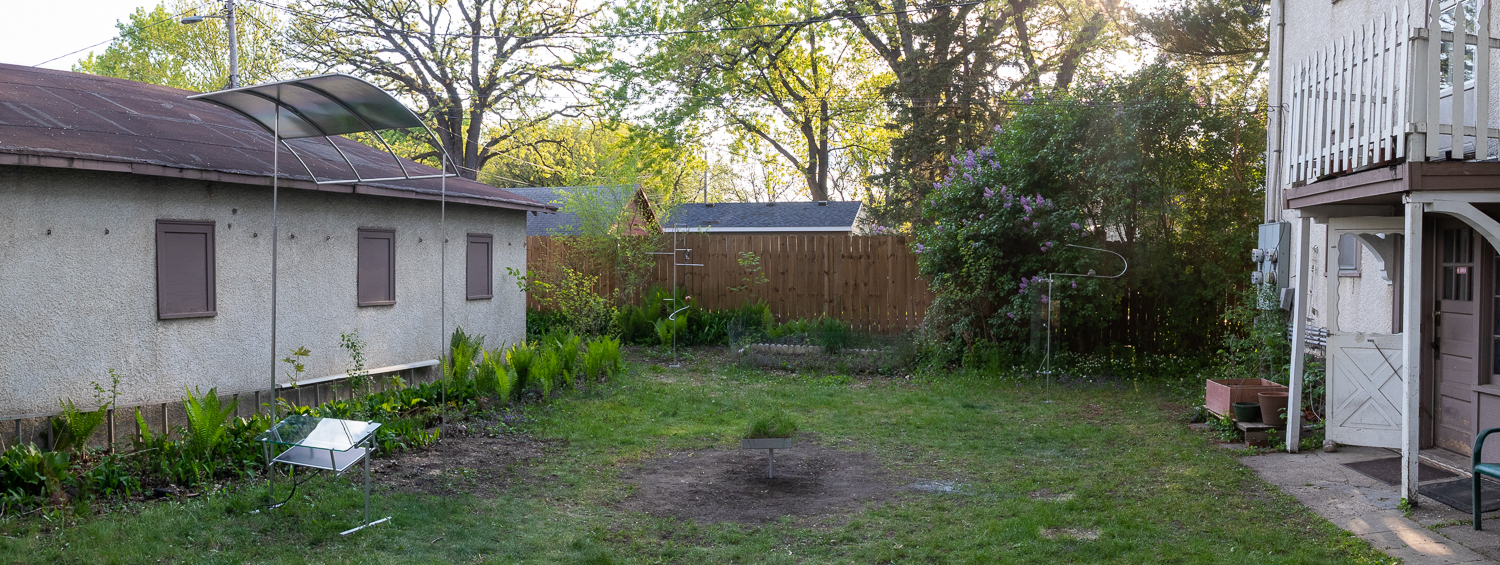
Around or between answers
Andy Delany
07/2021Andy Delany︎︎︎ builds sculptures and moving images as a means of examining contemporary conceptions of freedom and the willful forgetting of infrastructures of support. In Around or between answers, he installs a series of aluminum structures in the backyard of Normal Residential Purposes.
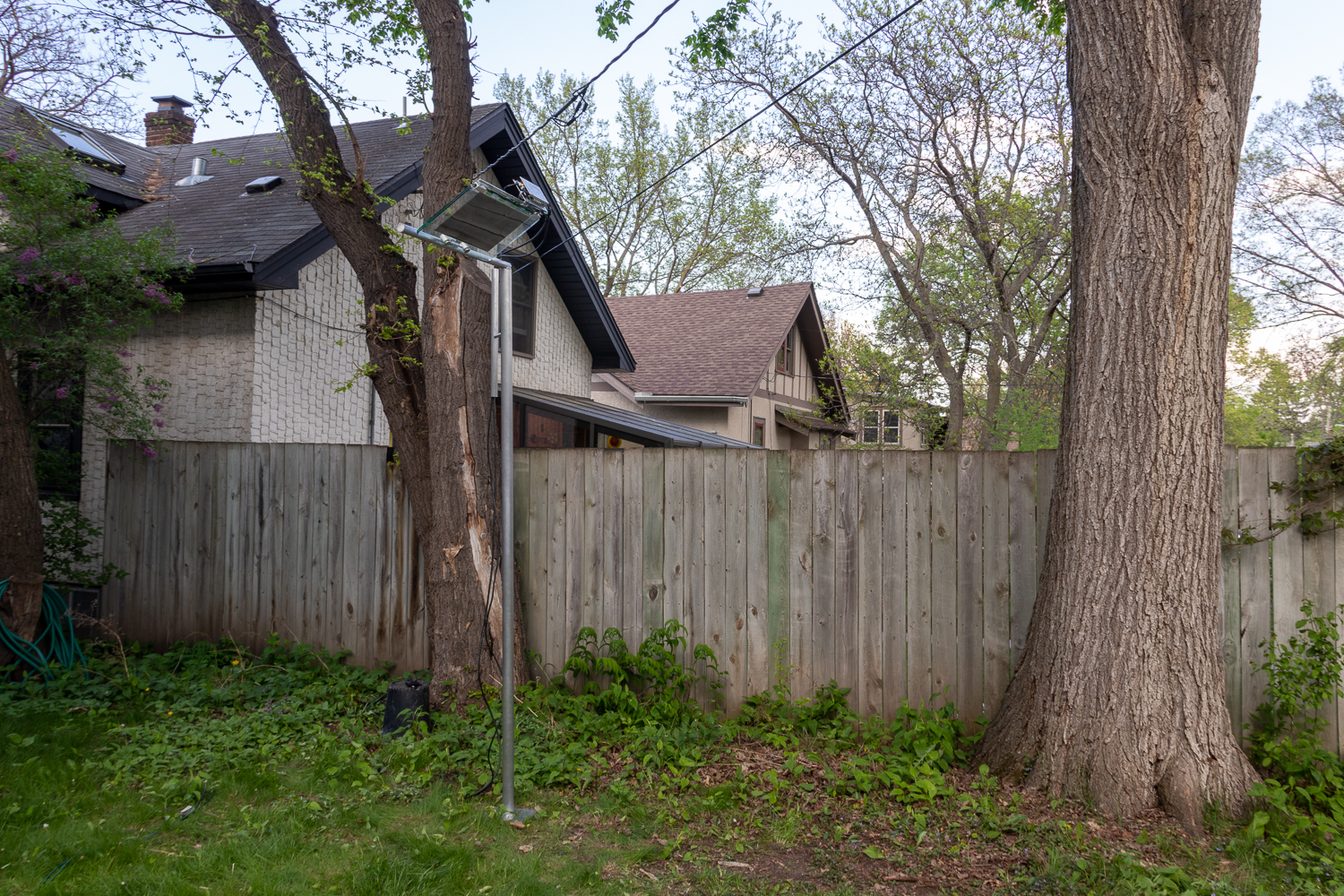
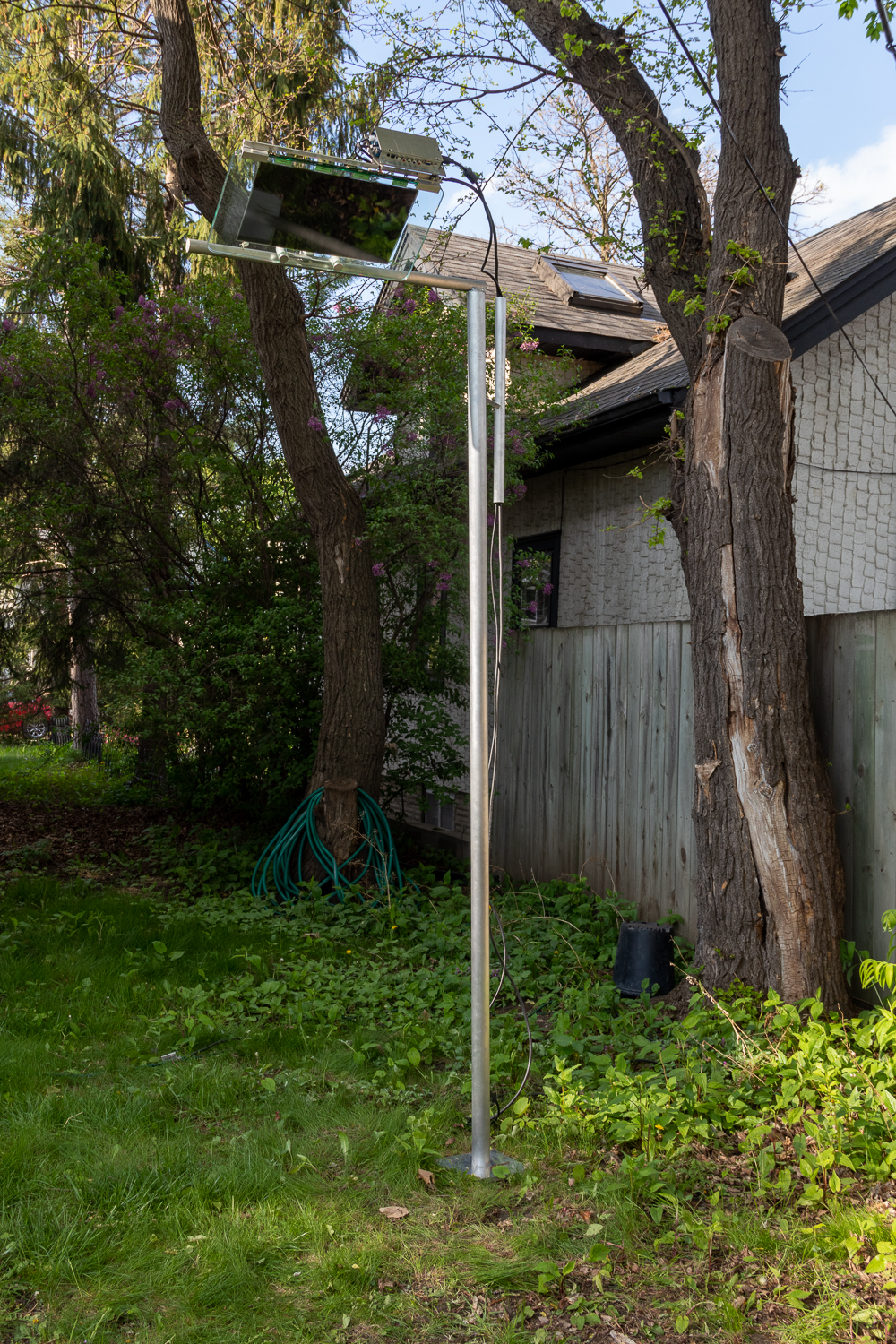
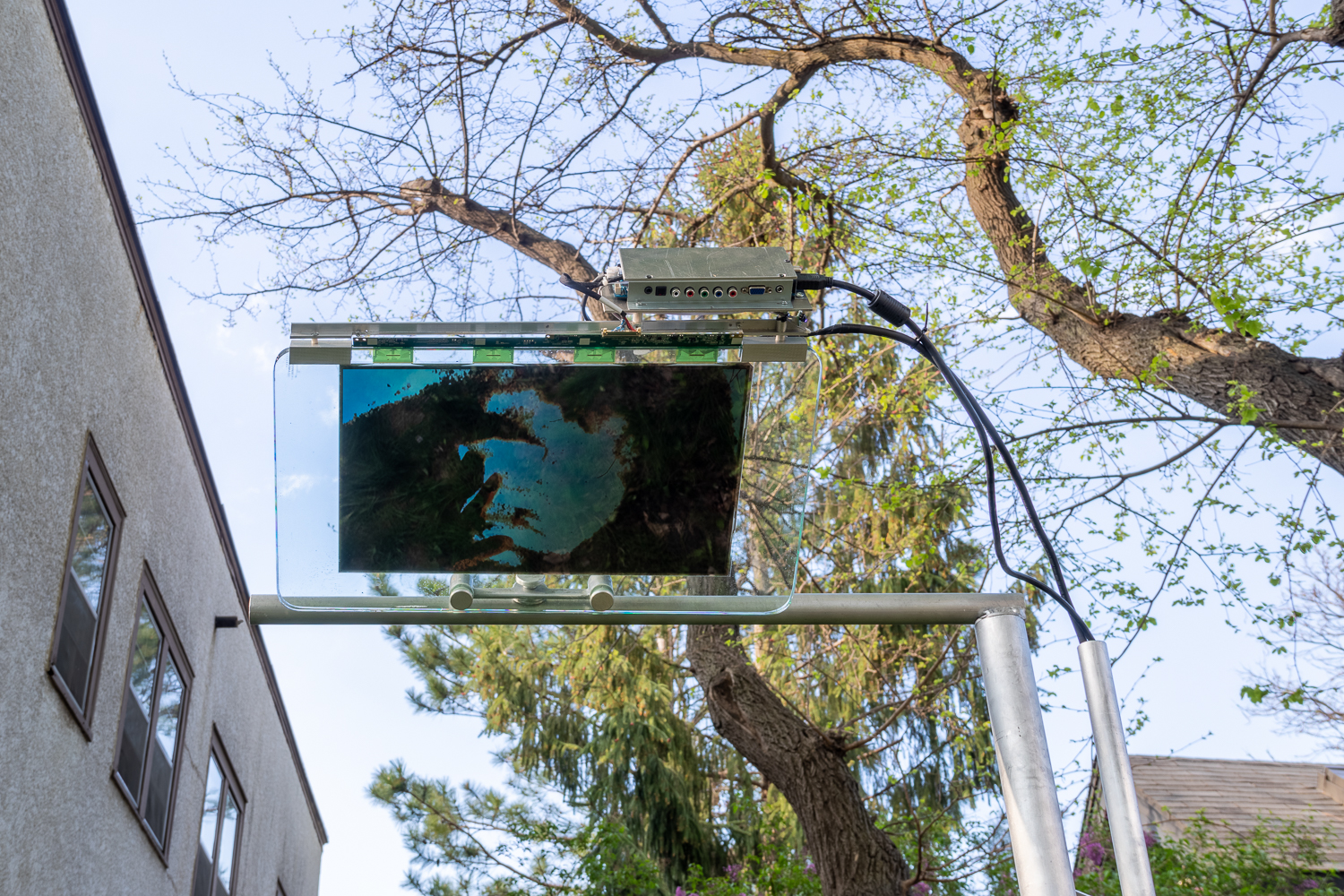
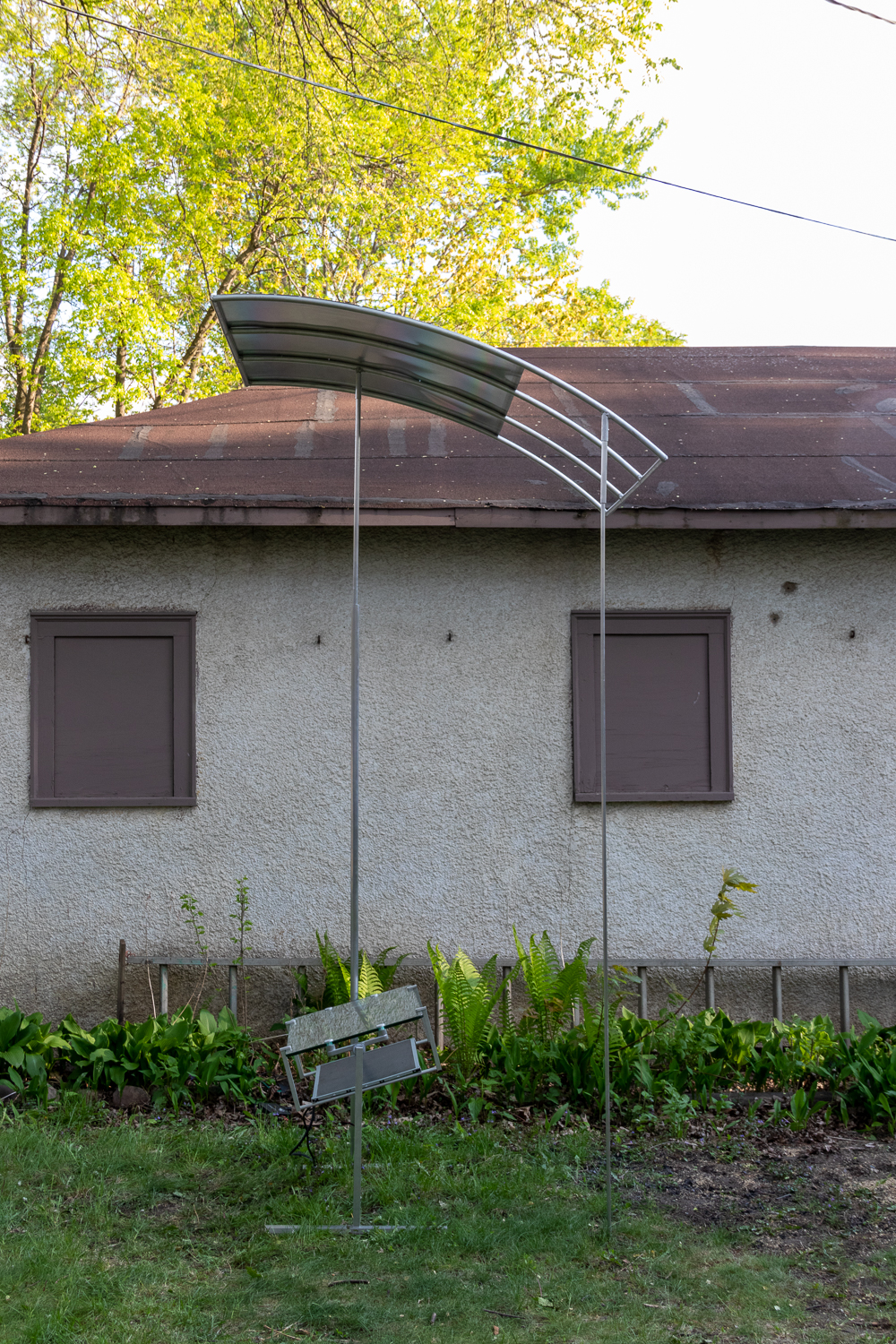
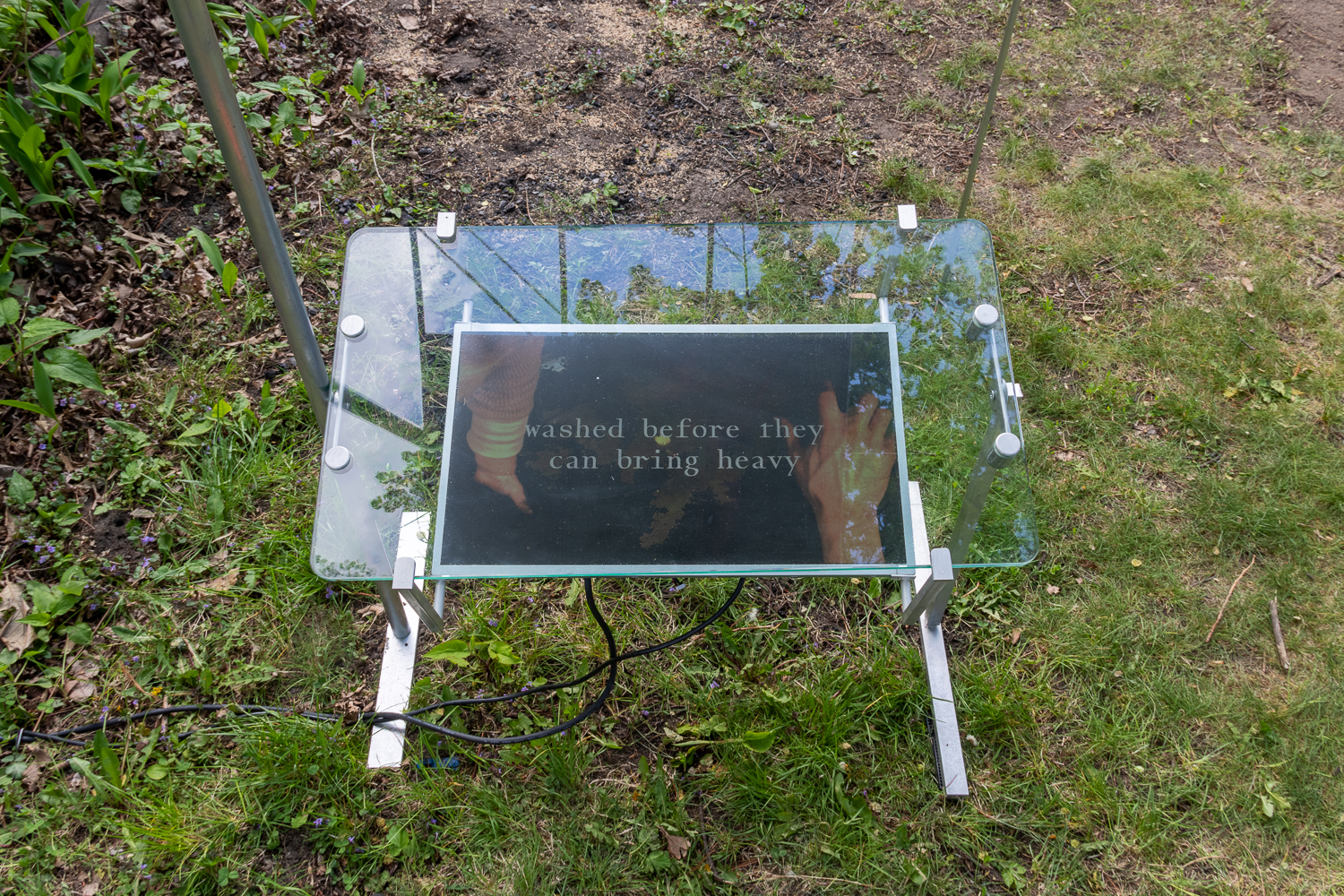
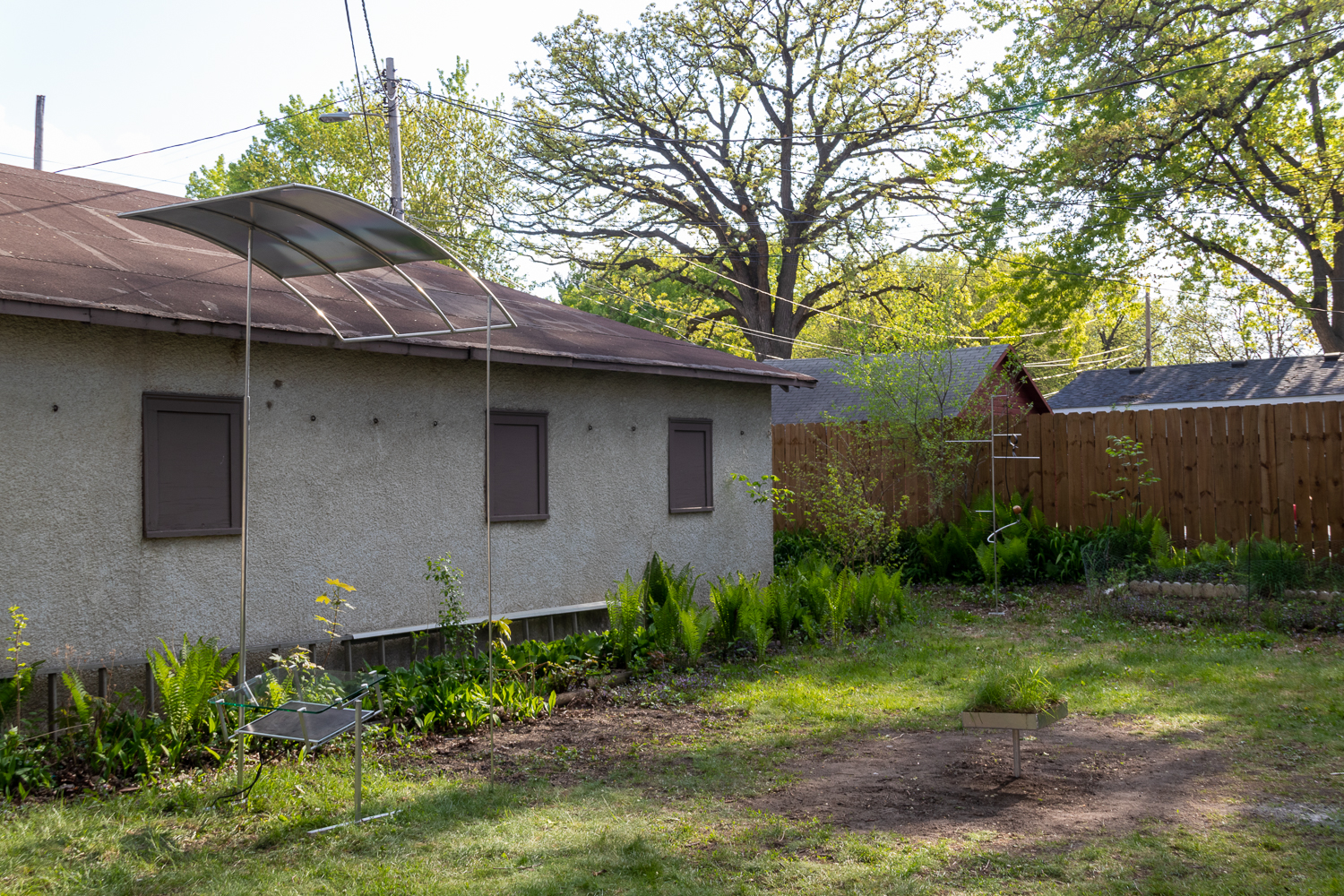
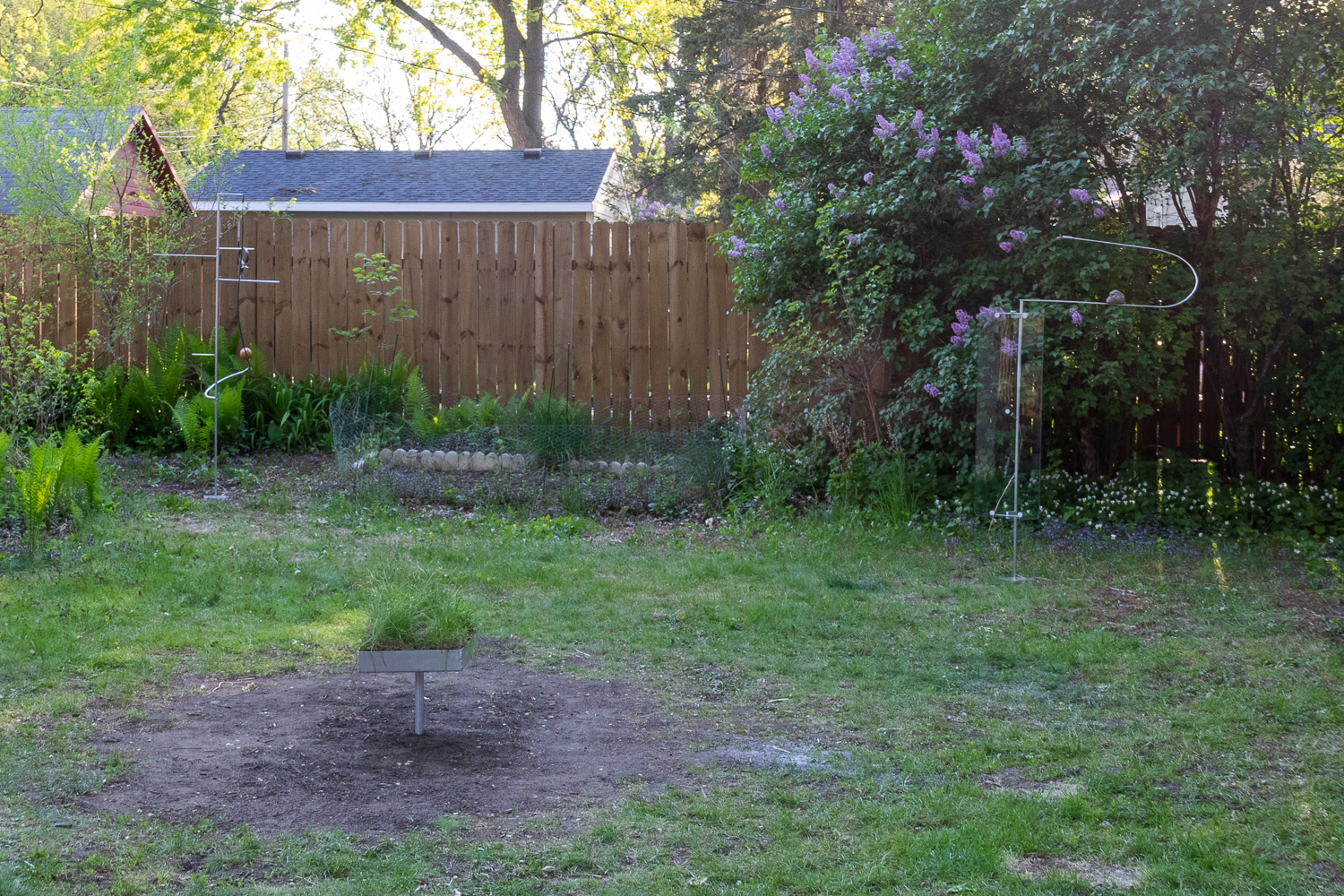
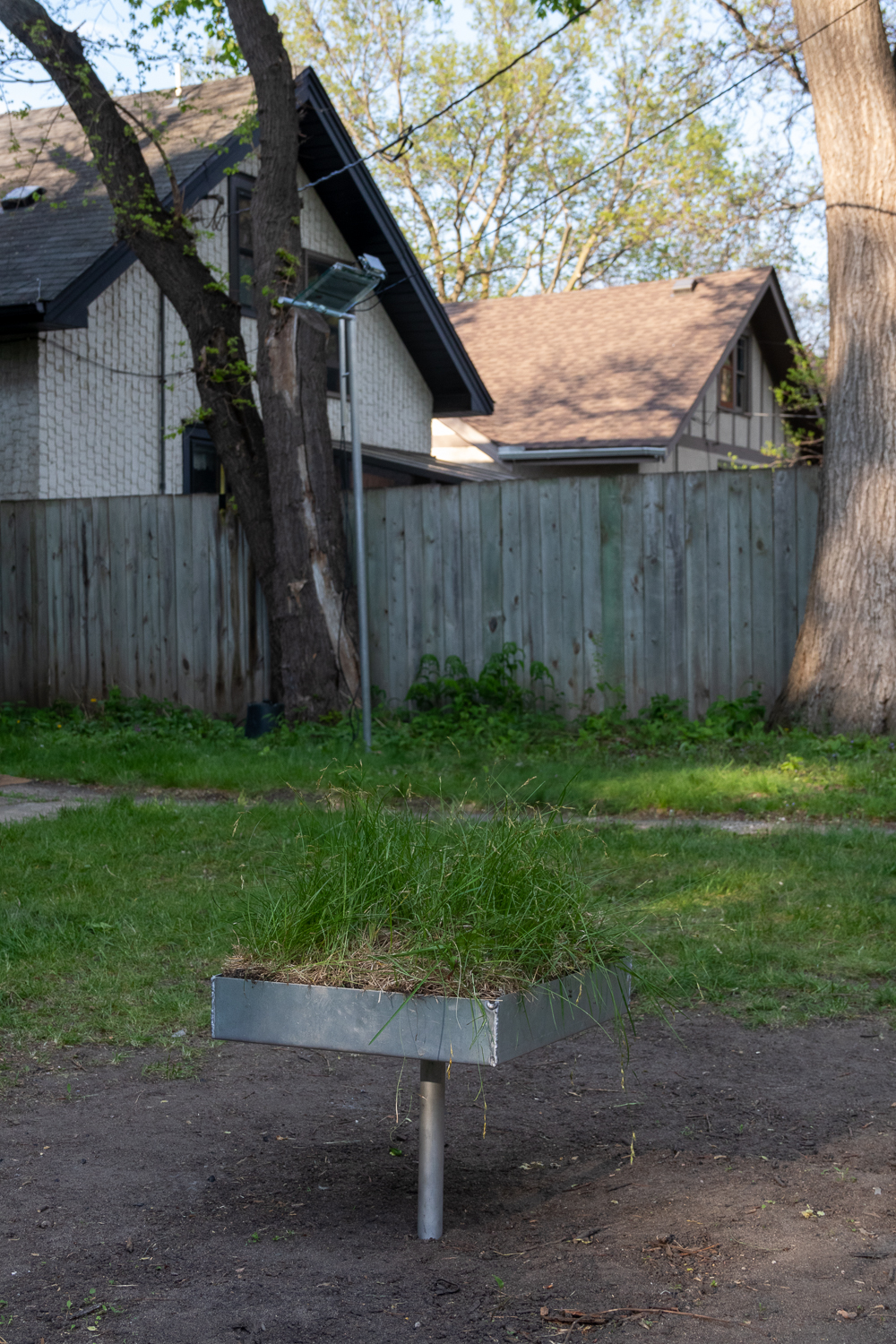
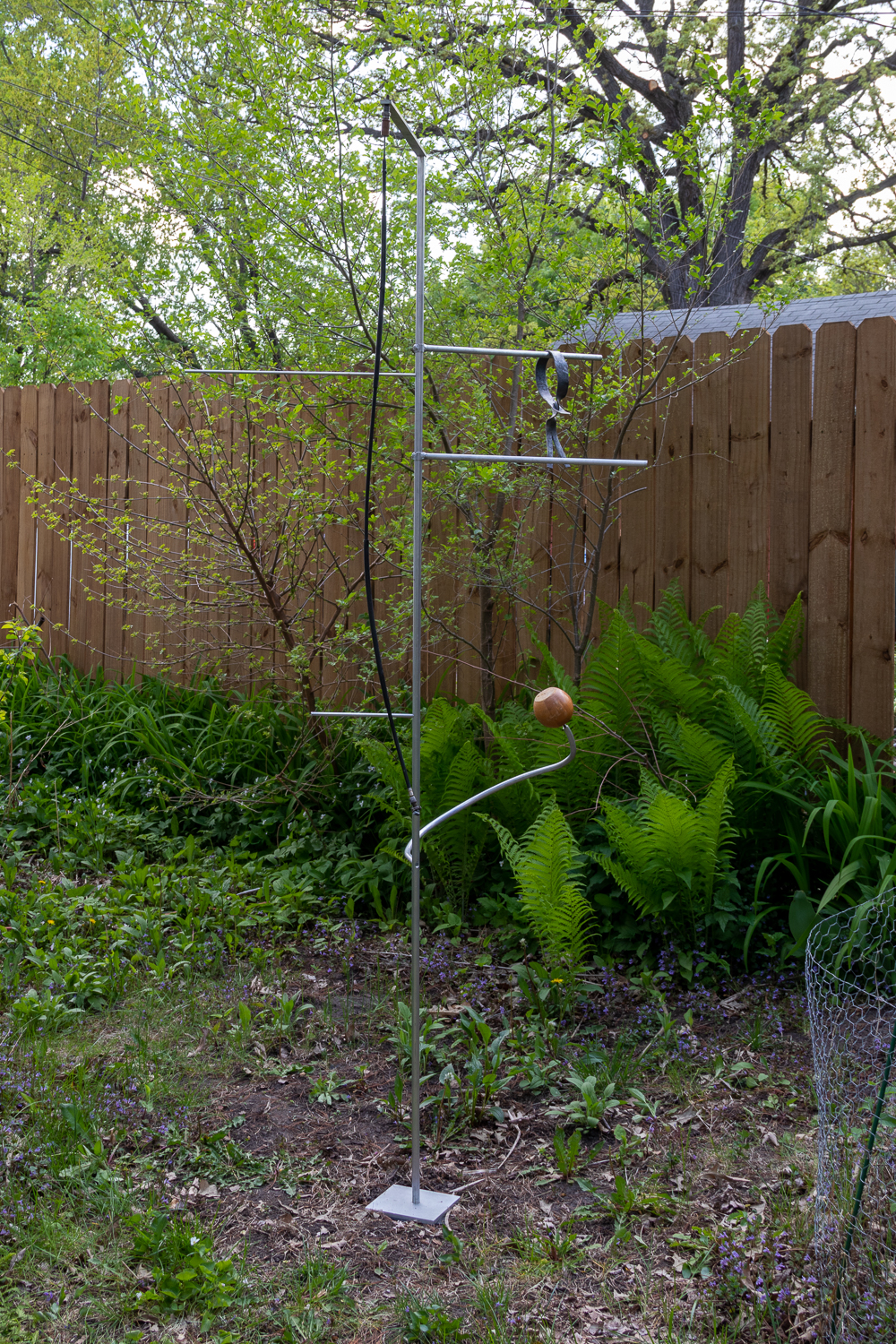
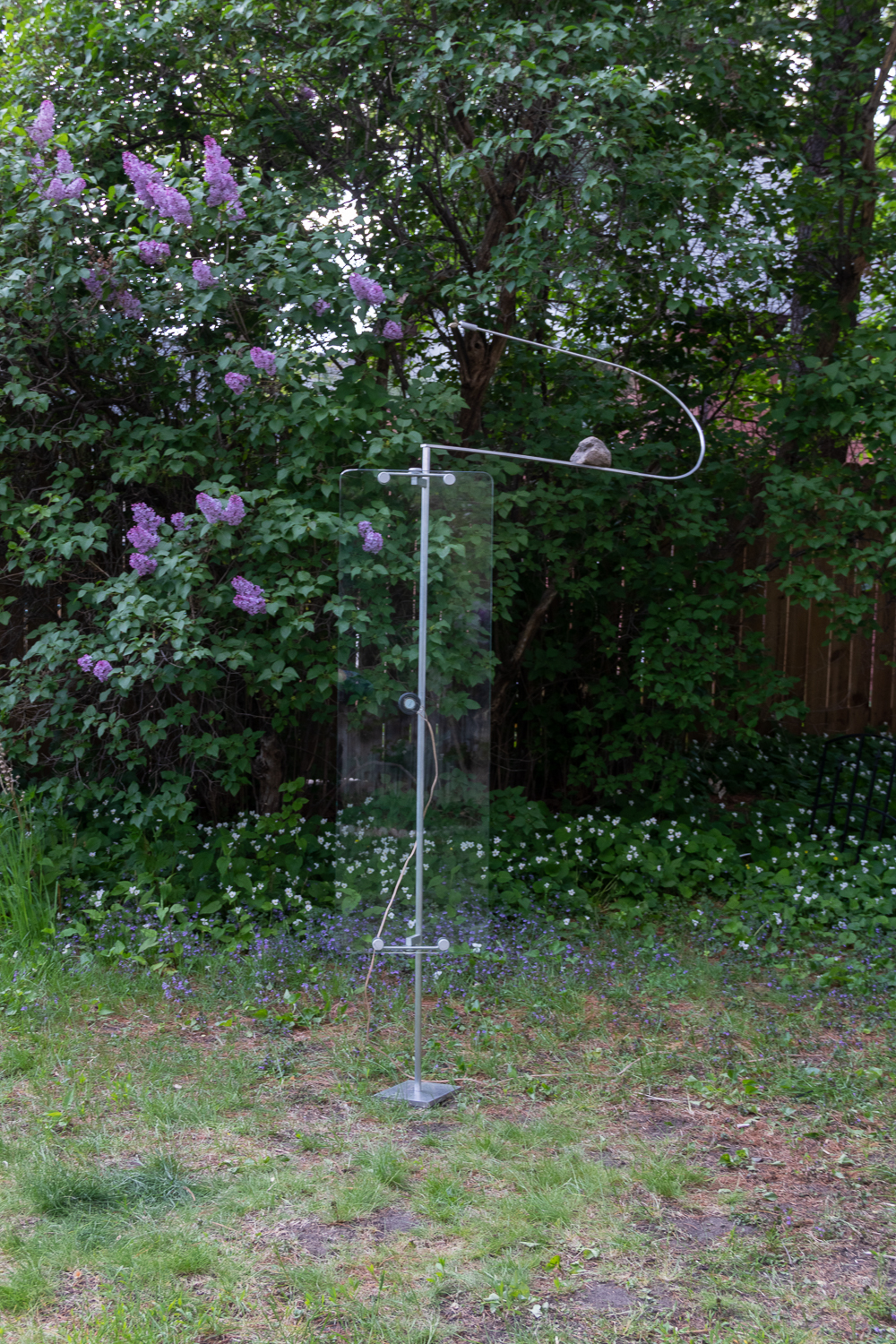
Installation images by Bade Turgut.
Curatorial Essay
Andy’s St. Paul studio is located on the top floor of a square building wedged between wholesale warehouses and a heating equipment supplier. On a well below freezing February morning, we sat at a sturdy table and drank coffee and tea out of heavy mugs. Behind Andy stood a row of aluminum and glass structures bolted tightly to the floorboards, each looking sure-footed. A few of these structures have since made their way across the river, where they have been planted in soft soil. Now they are slowly sinking.
The climate-controlled studio has been replaced by a backyard subject to the whims of a temperamental Minnesota climate. The ground itself is unpredictable: In May, the soil could be hardened by a late frost or soaked through and made porous by a sudden downpour—the intensity of which will only increase as the region continues to warm. Those storms might bring winds that will rattle the freestanding structures. With Around or between answers, Andy has released some of the control he has carefully maintained in previous projects, which have often involved bare glass and dangling electronics.
But the relationship between these structures and the natural world is not antagonistic. Rather than contend with these elements, Andy has welcomed their participation. He has removed the backlights of both video monitors, making the sun their light source—just like the surrounding trees and shrubs. (When he first wandered through the backyard to identify places to install, he reminded me of someone rearranging houseplants to ensure their access to the best possible light.) A nimble and inventive builder, Andy tends to his works as if tending to living beings with basic needs. He built impermeable roofs to protect each monitor, and constructed a wider base for one to ensure it could properly distribute its weight atop shifting ground.
With the addition of roofs and platforms on otherwise minimal aluminum frames, the works begin to resemble familiar street infrastructure like bus shelters and lampposts. Under a certain light, the yard feels like a crumbling and overgrown extension of Nicollet Mall, where you might expect the monitors to project advertisements for credit card companies or personal injury lawyers. However, the structures’ most striking resemblance is with the power lines above that, like most overhead lines, are composed of tightly coiled aluminum. In recent years, hundreds of wildfires along the West Coast—which caused haze to hang over the Twin Cities late last summer—have sparked when trees fell on similarly exposed wires. Elsewhere in the nation, workmen in fluorescent jackets repair high voltage power lines that swerve across Texas, where the energy grid failed during an unprecedented stretch of cold. As Andy calls our attention skywards and I notice our own strands, I am reminded of the inadequacies of our current equipment; we have twisted aluminum into a material in opposition to a natural world that is at once on fire, frozen, and sinking.
In contrast, Andy’s use of aluminum honors the material’s finiteness. Many of the structures’ parts are repurposed from previously leftover bits; after the exhibition’s brief run, these pieces will likely be remade into the components of future structures. Beyond exemplifying a resourcefulness necessary to weathering the Anthropocene—a geological age marked by the excess waste we produce—this approach brings to mind the fact that all the matter we have on this planet now is all the matter we will ever have. That blunt understanding materializes in the design of each structure, where there is seemingly no excess and every individual segment is deliberately placed to support another; their anchoring systems leave behind holes no larger than what a squirrel might dig.
The question of what gets left behind is particularly relevant in Around or between answers—and not simply because of the materials used. In both videos we see the hands of Andy’s child, Alys, playing with dirt. In one, he piles it atop a screen that reflects the sky; in the next, he brushes it around while the display beneath jumps from satellite imagery of airports to footage taken from airplane windows. Occasionally Andy’s hands make an appearance and also paw at the soil or graciously accept a bit of dirt that Alys offers. Such intimacy unfolding on exposed monitors, fixed to sinking metal structures, beneath surging power lines suggests the need for more tender infrastructure. Alys’ wonder at soft things calls us to replace the hard surfaces that do not serve us, and protect all that is worth saving.
The climate-controlled studio has been replaced by a backyard subject to the whims of a temperamental Minnesota climate. The ground itself is unpredictable: In May, the soil could be hardened by a late frost or soaked through and made porous by a sudden downpour—the intensity of which will only increase as the region continues to warm. Those storms might bring winds that will rattle the freestanding structures. With Around or between answers, Andy has released some of the control he has carefully maintained in previous projects, which have often involved bare glass and dangling electronics.
But the relationship between these structures and the natural world is not antagonistic. Rather than contend with these elements, Andy has welcomed their participation. He has removed the backlights of both video monitors, making the sun their light source—just like the surrounding trees and shrubs. (When he first wandered through the backyard to identify places to install, he reminded me of someone rearranging houseplants to ensure their access to the best possible light.) A nimble and inventive builder, Andy tends to his works as if tending to living beings with basic needs. He built impermeable roofs to protect each monitor, and constructed a wider base for one to ensure it could properly distribute its weight atop shifting ground.
With the addition of roofs and platforms on otherwise minimal aluminum frames, the works begin to resemble familiar street infrastructure like bus shelters and lampposts. Under a certain light, the yard feels like a crumbling and overgrown extension of Nicollet Mall, where you might expect the monitors to project advertisements for credit card companies or personal injury lawyers. However, the structures’ most striking resemblance is with the power lines above that, like most overhead lines, are composed of tightly coiled aluminum. In recent years, hundreds of wildfires along the West Coast—which caused haze to hang over the Twin Cities late last summer—have sparked when trees fell on similarly exposed wires. Elsewhere in the nation, workmen in fluorescent jackets repair high voltage power lines that swerve across Texas, where the energy grid failed during an unprecedented stretch of cold. As Andy calls our attention skywards and I notice our own strands, I am reminded of the inadequacies of our current equipment; we have twisted aluminum into a material in opposition to a natural world that is at once on fire, frozen, and sinking.
In contrast, Andy’s use of aluminum honors the material’s finiteness. Many of the structures’ parts are repurposed from previously leftover bits; after the exhibition’s brief run, these pieces will likely be remade into the components of future structures. Beyond exemplifying a resourcefulness necessary to weathering the Anthropocene—a geological age marked by the excess waste we produce—this approach brings to mind the fact that all the matter we have on this planet now is all the matter we will ever have. That blunt understanding materializes in the design of each structure, where there is seemingly no excess and every individual segment is deliberately placed to support another; their anchoring systems leave behind holes no larger than what a squirrel might dig.
The question of what gets left behind is particularly relevant in Around or between answers—and not simply because of the materials used. In both videos we see the hands of Andy’s child, Alys, playing with dirt. In one, he piles it atop a screen that reflects the sky; in the next, he brushes it around while the display beneath jumps from satellite imagery of airports to footage taken from airplane windows. Occasionally Andy’s hands make an appearance and also paw at the soil or graciously accept a bit of dirt that Alys offers. Such intimacy unfolding on exposed monitors, fixed to sinking metal structures, beneath surging power lines suggests the need for more tender infrastructure. Alys’ wonder at soft things calls us to replace the hard surfaces that do not serve us, and protect all that is worth saving.